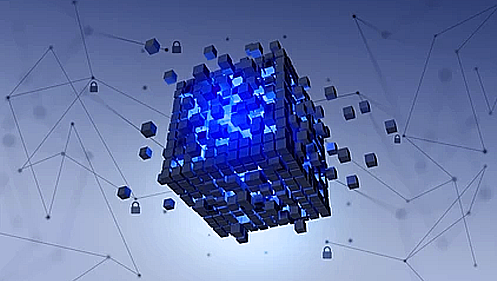Accredited InvestorsAltcoinAnatoli UnitskyAnti-Money Laundering (AML) In CryptoAPIArbitrageArtCoin TokenArticle DirectoryASICAuction Terminology GlossaryBasics of Stock Market InvestingBear MarketBest Crypto Payment Provider In the WorldBitcoinBlockchainBlockchain ConfirmationBlockchain Consensus MechanismBlockchain ForkBlockchain GlossaryBored Ape Yacht ClubBuild a Business That OutperformsBull MarketBuying SkyWay SharesByzantine Fault Tolerance (BFT) ExplainedCasascius CoinCentral Bank Digital Currency (CBDC)Centralized Crypto ExchangeCoinCoinsetCold WalletCollateralCommodity Futures Trading Commission (CFTC)Cross-Chain TechnologyCRUCrypto ExchangeCrypto GlossaryCrypto JokesCrypto Terms to KnowCrypto TickerCryptocurrencyCryptographyCryptojackingCryptounit BlockchainCryptounit GlossaryCryptounit ProgramdApp (Decentralized Application)Dead CoinDecentralized Exchange (DEX)Decentralized Finance (DeFi)Difference Between Bitcoin and EthereumDifferent Ways of Investing MoneyDigital CurrencyDistributed LedgerDo Your Own Research (DYOR)Dollar Cost Averaging (DCA)Dow Jones Industrial Average (DJIA)EncryptionERC-20ERC-721EthereumEvoScentFear Of Missing Out (FOMO)Fear, Uncertainty and Doubt (FUD)Fiat MoneyFNT Fintech CompanyGenesis BlockGlobal Unit PayGlossary of Banking TermsGlossary of Business TermsGlossary of Financial TermsHalvingHODLHot WalletHow Do I Start InvestingHow Rich is Satoshi Nakamoto?How to Create a BlockchainHow to Find Private InvestorsHow to Get Into FintechHow to Program Smart ContractsI Am Thrilled to Be a Part of This Global ProjectInitial Coin Offering (ICO)Initial Public Offering (IPO)Initial Token Offering (ITO)Innovation Basalt TechnologyInnovative Transportation TechnologiesInternational Bank Account Number (IBAN)Investing in Gold Mining StocksInvesting in Gold MiningJagerJoy of Missing Out (JOMO)Know Your Customer (KYC)LedgerLiquidity in CryptocurrencyMaker and Taker Fees in Crypto TradingMarket Capitalization (Market Cap)Meme CoinMetal Credit CardMetaMaskMillenials Now Have Access to Generational WealthMy Best Investment EverNew Digital EvolutionNFT GlossaryOff-Chain TransactionsOn-Chain TransactionsOpen Edition NFTPeer-to-Peer (P2P)Personal Loan GlossaryProbably the Best STO on the MarketProof of Stake (PoS)Real Estate Glossary of TermsReal Estate Investing GlossaryRebase TokenSecurities and Exchange Commission (SEC)Security Token ExchangesSecurity Token Offering (STO)Soulbound Decentralized Identities for Security TokensSoulbound ID Launch by Stobox Proves a SuccessSoulbound TokensStoboxStock Market GlossaryTestimonialsTether Platform and Token (USDT)UnitEx ExchangeUnitsky String TechnologiesUNTBUSDUValidatorWe Started Investing When We Were 25What are Blue Chip NFT?What are Blue Chip Stocks?What are Crypto Assets?What are Crypto Smart Contracts?What are CryptoPunks NFT?What are Digital Assets?What are Digital Collectibles?What are Gas Fees?What are Gas Wars?What are Hashmasks?What are Non Fungible Tokens?What are Non-Sufficient Funds (NSF)?What are Soulbound Tokens (SBT)?What are Stablecoins in Crypto?What are Transactions Per Second (TPS)?What are Utility NFTs?What are Utility Tokens?What Does Burning Crypto Mean?What Does Diamond Hands Mean?What Does Paper Hands Mean?What Does To The Moon Mean?What Does WAGMI Mean?What Happened to Satoshi Nakamoto?What is a 51% Attack?What is a Baby Boomer?What is a Backlink?What is a Banner?What is a Barcode?What is a Bid-Ask Spread in Crypto?What is a Block in Blockchain?What is a Block Reward?What is a Blockchain Address?What is a Blockchain Node?What is a Blockchain Oracle?What is a Blog?What is a Bond?What is a Bot?What is a Broker?What is a Business Accelerator?What is a Cash Cow?What is a Commercial Bank?What is a Commodity?What is a Con?What is a Credit?What is a Credit Limit?What is a Credit Rating?What is a Crypto Airdrop?What is a Crypto Bridge?What is a Crypto Scam?What is a Crypto Token?What is a Crypto Wallet?What is a Crypto Whale?What is a Crypto Winter?What is a Cryptocurrency Public Ledger?What is a Cryptocurrency Roadmap?What is a DAO?What is a Dark Pool?What is a Day Trader?What is a Dead Cat Bounce?What is a Default?What is a Derivative?What is a Digital Credit Card?What is a Fiscal Quarter?What is a Fungible Token?What is a Governance Token?What is a Grace Period?What is a Hard Fork?What is a Hot Wallet?What is a Hybrid Blockchain?What is a Hybrid PoW/PoS?What is a Joint Account?What is a Market Cap?What is a Merkle Tree in Blockchain?What is a Mining Farm?What is a Nonce? What is a PFP NFT?What is a POS System?What is a Prepaid Card?What is a Private Blockchain?What is a Private Key?What is a Public Blockchain?What is a Public Key?What is a Reserve Currency?What is a Ring Signature?What is a Routing Number?What is a Rug Pull in Crypto?What is a Safe Deposit Box?What is a Satoshi?What is a Security Token?What is a Seed Phrase?What is a Shitcoin?What is a Sidechain?What is a Soft Fork?What is a Spot Market?What is a State Bank?What is a SWIFT Code?What is a Tax Identification Number (TIN)?What is a Time Deposit?What is a Transaction Account?What is a Variable Interest Rate?What is a Virtual Assistant (VA)?What is a Virtual Card?What is a Virtual Currency?What is a Visa Card?What is a Whitelist in Crypto?What is a Whitepaper?What is Accounts Payable (AP)?What is AMA in Crypto?What is Amortization?What is an Accrual?What is an ACH Transfer?What is an Actuary?What is an Addendum?What is an Algorithm?What is an Angel Investor?What is an Annuity?What is an Asset?What is an ATM?What is an Atomic Swap?What is an Audit?What is an Avatar?What is an EIN?What is an Embargo?What is an Entrepreneur?What is an IDO (Initial Dex Offering)?What is an Interest Rate?What is an Internet cookie?What is an Investment Bank?What is an NFT Drop?What is an NFT Floor Price?What is an Ommer Block?What is an Orphan Block?What is an Outstanding Check?What is an Overdraft?What is Artificial Intelligence (AI)?What is B2B (Business-to-Business)?What is B2G (Business-to-Government)?What is Bartering?What is Bitcoin Dominance?What is Bitcoin Pizza Day?What is Blockchain Immutability?What is Blockchain Used For?What is BRICS?What is Business-to-Consumer (B2C)?What is C2C (Customer to Customer)?What is Capitalism?What is Catfishing?What is CFD Trading?What is Check Kiting?What is Cloud Mining?What is Communism?What is Content Marketing?What is Decentralization in Blockchain?What is DeFi in Crypto?What is Delisting?What is Depreciation?What is Digital Marketing?What is Diversification?What is Double Spending?What is Dumb Money?What is Dumping?What is Earnings Per Share (EPS)?What is Economics?What is Email Marketing?What is Equity?What is Etherscan?What is Fintech?What is Foreign currency?What is Forex?What is Fundamental Analysis (FA)?What is GameFi?What is Generative Art NFT?What is Gwei?What is Hard Currency?What is Hash Rate?What is Hashing in Blockchain?What is Inflation?What is Initial Game Offering (IGO)?What is Interest?What is Interest Income?What is Mainnet?What is Mastercard?What is Metaverse in Crypto?What is Mining in Cryptocurrency?What is Minting NFT?What is Mobile Banking?What is Money Laundering?What is NFT Alpha?What is NFT Metadata?What is NFT Rarity?What is NGMI Meaning?What is Nominal Interest Rate?What is Online Banking?What is Open-End Credit?What is OpenSea NFT Marketplace?What is Personal Identification Number (PIN)?What is Play-to-Earn?What is Polygon?What is Proof of Authority (PoA)?What is Proof of Work (PoW)?What is Public Key Cryptography?What is Pump and Dump?What is Quantum Computing?What is Refinancing?What is Retail Banking?What is Ripple?What is Sharding?What is Slippage in Crypto?What is Smart Money?What is Solvency?What is Soulbound ID?What is SSL?What is Staking in Cryptocurrency?What is Technical Analysis (TA)?What is Testnet?What is the Ask Price?What is the Better Business Bureau (BBB)?What is the Bid Price?What is the Dark Web?What is the InterPlanetary File System (IPFS)?What is the Gold Standard?What is the Lightning Network?What is the Prime Rate?What is the Sandbox?What is the Secondary Market?What is the World Bank?What is Tier 1 Capital?What is Tokenomics?What is TRC-20?What is Universal Banking?What is Unspent Transaction Output (UTXO)?What is Usury?What is Volatility in Crypto?What is Wash Trading?What is Web3?What is Whisper?What is XRP?What is Zero-Knowledge Proof (ZKP)?Who is Beeple?Who is Satoshi Nakamoto?Who is Vitalik Buterin?Why Tokenization is a Safe HavenWhy You Should Try Your Hand at Trading
How to Create a Blockchain
- Home
- Article Directory
- How to Create a Blockchain
A blockchain is a distributed ledger technology that allows for the creation of secure, tamper-proof networks.

It offers many potential uses, from enabling faster and more efficient transactions to managing digital rights and identity verification.
Blockchains are important because they provide a secure and efficient way for businesses to store and transmit data. They can also be used to facilitate transactions between multiple parties and reduce the costs associated with intermediaries like banks or clearinghouses. In this guide, we will walk you through the steps needed to create your own blockchain.
Step 1: Identify a Suitable Use-case
The first step in creating a blockchain is to identify a suitable use-case for your network. Some potential applications include managing digital rights, keeping track of supply chains and logistics, enabling faster and more efficient transactions, or providing secure communication across multiple parties. A use-case is a particular application or scenario in which a blockchain can be applied to solve a business problem. It is important to identify a suitable use-case because it will guide your decision-making process and help you choose the right consensus mechanism for your network.
Step 2: Select Your Consensus Mechanism
Once you have identified an appropriate use-case, the next step is to select your consensus mechanism. There are many different types of consensus mechanisms available, including proof of work, proof of stake, delegated proof of stake, and more. The choice depends on factors such as the size and complexity of your network, how much control you want to have over it, and whether or not participants need to be incentivized to participate in your blockchain.
how to choose the best consensus mechanism?
Choosing the right consensus mechanism is an important step in creating your blockchain, as it will impact how your network operates and functions. Some key considerations include the size and complexity of your network, whether or not participants need to be incentivized to participate, and the level of control you want to have over your blockchain.
There are many different types of consensus mechanisms available, including proof of work, proof of stake, delegated proof of stake, and more. Ultimately, the choice depends on factors such as the specific use-case for your network and what level of security you need to maintain. Some consensus mechanisms tend to work better than others for specific use cases or industries, so it is important to carefully evaluate all available options before making a decision.
Step 3: Identify the Most Suitable Platform
There are many blockchain platforms out there today and lots of them are free and open source. Depending on your use-case and the features that you need, some platforms may be better suited to your needs than others. Some key things to consider when choosing a blockchain platform include the level of security and privacy you need, whether or not you will be running smart contracts on your network, and what programming language you are most comfortable working with.
Step 4: Designing the Nodes
Once you have selected a suitable blockchain platform, the next step is to design the nodes that will make up your network. A node can simply be defined as a device or computer that connects to the blockchain network using specialized software. There are many different types of nodes available, depending on how much computing power and bandwidth is needed for participating in transactions on your network. Some common node types include full nodes, miner nodes, and light nodes.
Step 5: Configuring Your Blockchain
Finally, once your blockchain is up and running, there will likely be a number of configuration options that you need to consider in order to make it work the way that you want. This may include setting rules about who can participate in your network, adjusting transaction fees, configuring assets or smart contracts on your chain, and more. It is important to take all of these factors into account when configuring your blockchain, as they will have a direct impact on how effectively it functions and how secure it is.
Step 6: Build the APIs
In order for your blockchain to be truly useful, you will need to build a set of APIs that allow other systems or applications to interact with it. This may include creating a web-based API for users to send transactions, building an API for programmatic access via a command-line interface, or implementing software libraries that enable easier integration into existing systems. There are many different options when it comes to building APIs and this may vary depending on the specific use case and platform that you have chosen. However, taking the time to build robust and well-designed APIs is essential if you want others to be able to easily connect with your blockchain network.
Step 7: Design the User Interface
Finally, in order for your blockchain to be truly useful and usable by a wide range of people, you will need to design a user interface that is both attractive and intuitive. This may include creating web or mobile-based apps that allow users to easily interact with your blockchain network and all of its features. There are many different options when it comes to designing user interfaces, so it is important to consider what type of experience you want your users to have when engaging with your blockchain. By taking these steps into account, you can create a successful and functional blockchain network that can be used for a wide range of use cases.
New Blockchains vs Blockchain Forks?
There are many different types of blockchain networks available today, and each one offers its own set of benefits and challenges. The main difference between these different types of blockchains is how they were designed and developed. Traditional blockchains like Bitcoin or Ethereum were built from the ground up to address a specific need, whether it is creating a decentralized payment network or enabling smart contracts on a public blockchain platform. New blockchain networks, on the other hand, are often built as a result of forking an existing blockchain platform in order to introduce changes or improvements.
At the end of the day, there is no right or wrong choice when it comes to choosing a blockchain network. Each type of platform has its own advantages and disadvantages, and which one is best suited for your needs will depend on a number of different factors. Whether you are looking to create a new blockchain from scratch or simply want to improve upon an existing platform, it is important to consider all of the available options in order to make an informed decision about how you want your network to function.
As more and more businesses begin using blockchains in their operations, we are likely to see an increasing number of new platforms emerge that offer innovative features and improved capabilities. Ultimately, the key is finding the right balance between security, reliability, and functionality in order to create a blockchain that meets your specific needs.
Related Articles

Blockchain
Blockchain has been a major tech topic over the past 10 years, with widespread discussion but limited understanding of its concept and operation. Despite its complexity, the essence...

Blockchain Confirmation
In traditional banking systems, when you perform a money transfer using fiat currencies, you receive a transaction receipt as evidence of a legitimate and completed transfer. This receipt provides...
- Home
- Article Directory
- How to Create a Blockchain